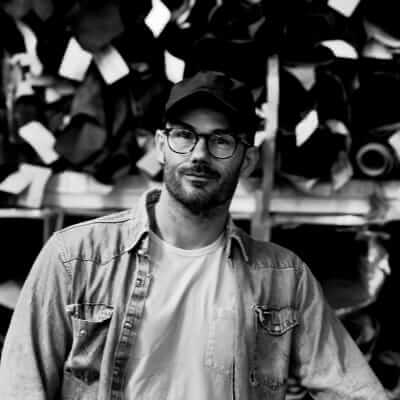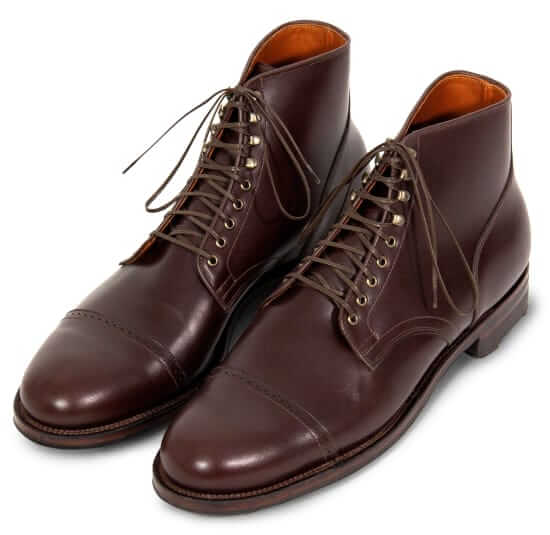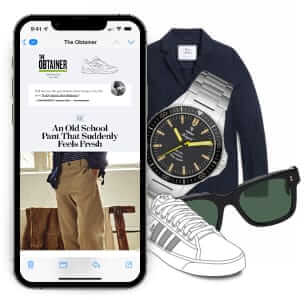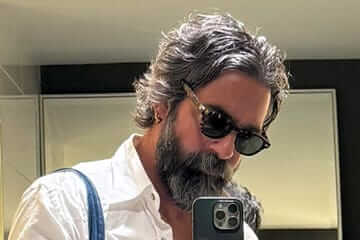Style Strategies
⇾ Brett Viberg,
Owner of Viberg
The 3rd-generation bootmaker on how investing in quality saves you money in the long run

Brett Viberg was born into a family of bootmakers. His grandfather founded the Viberg company in 1931, offering durable logging and hiking boots but over the last few decades, the Canadian company has reinvented itself into a proper heritage brand with a range of footwear still built the old-fashioned way. Back in 2008, Brett introduced the Stitchdown Service boot. Featuring a low, comfortable heel and an almond-shaped toe, the dress boot retained the durability and functionality of the sturdiest work boots. It was definitely a departure from the brand's standard offerings, which is what helped put it on the menswear map. “I think it was a combination of timing and luck,” he remembers. “At that time, the idea of taking this classic style combined with our industrial manufacturing, along with a more sophisticated last or shape simply did not exist—you had other workwear brands essentially selling a work boot, but no one had tried to blend a bunch of ideas into one.” The boot was a bonafide hit and in 2020, the distinct design received USPTO Trade Dress Protection for the innovation.

With his passion for shoemaking and design, Brett has continued to grow the Viberg brand by preserving traditional bootmaking methods while combining them with classic shapes and ultra-premium materials. Today, they make everything from rugged workwear and outdoor boots to suede slippers and sleek sneakers cut from luxurious leathers. Quality, integrity and authenticity remain at the forefront of this family-run company, but Brett is successfully driving Viberg forward in a uniquely modern way that continues to make waves and get the brand noticed by guys looking for quality footwear. “I tried long and hard to not be involved mainly due to seeing how much my dad had given to the business,“ says Brett. “My thought was if I decided to get involved on an ownership level, I knew it would take over my life—which it has—but it's given me more opportunities than I could have ever imagined.” As for his personal style, Brett manages his wardrobe like his brand—with a mix of timeless staples and a few modern touches. We wanted to know more about how he shops and what he's currently into.

Describe your style in five words or less.
Well-crafted curated basics.

Service boot,
$920 by Viberg
What’s one item that every man needs in his closet?
I think everyone needs one of the iconic styles in each category. It could be our Stitchdown Service boot, but of course, I realize it's not for everyone. There's just something about the classic styles—they are never out of season and can last a lifetime on their own if you invest in a well-made product.
Is there an item that you can’t part with?

Hans Wegner
walnut CH30 chair,
$1,100 at Carl Hansen
Anything from my vintage collection, really. I've got an extensive collection of new old stock from mid-1800s onwards.
Favorite brands at the moment?
I've got a bunch of Carl Hansen's products in my home that are beautifully crafted and have taken on a life of their own with wear and time.
And The Real McCoy's, are without a doubt, simply the best classic staple products you can buy. There is just no argument.
Advertisement
Anything currently on your wish list?
I'd like to get a proper jacket—a set-in sleeve—which seems to be hard to find. Ideally something super heavy fabric-wise. But everything that I've seen is either out of my price range or below, or is more of a fashion version versus an authentic weight product. What I want is a Filson-weight Mackinaw fabric, but in a semi-tailored shaped mac overcoat. I go back to this idea of “elegant utility”, which is how most apparel and footwear was previously made and is one of the reasons why vintage is sought after now. Overbuilt and made to last.
Do you shop more online or in-store?
I'd rather shop in person if I happen to be in a city that has great retail, but I am more interested in merchandising and curation. Otherwise online allows for much more selection and ease.
Best city for shopping?
Tokyo is the best for me. The customer experience, they manage to touch on all senses when you go into certain stores in Japan. Normally, I am buying something for the home or perhaps my daughter.

What’s a necessary extravagance
for you?
My vintage footwear collection. Depending on what it is, I will pay to have something with provenance, based on my own family history in shoemaking. I can learn a lot by looking into the past and trying to honor some of those manufacturing principals if possible.
Advertisement
Anything you refuse to pay a lot for?
It would be cars—vintage or a new car. I just don't seem to care enough to buy new or overpay on vintage. I absolutely love and appreciate it but since I am unsettled about what the one thing would be, I don't think I would be happy with just one.

Pocket tee,
$75 by The Real McCoy’s
What’s something you buy multiples of (either by design or by default)?
Basic white pocket tees. I'll buy 10 at a time, opening five or six and leaving the others for later.
Which do you experience more: buyer’s remorse or regret for not buying something?
Regret. I know that most of the items I want are made in limited batches, which is like my own business.
One shopping hack that everyone should know about?
If you like it, then buy it. There is no point in waiting and risking it being sold out on you. Your initial gut instinct will tell you if you really need it or not. If you have to think about it too much, it means you probably will have buyer's remorse.





































